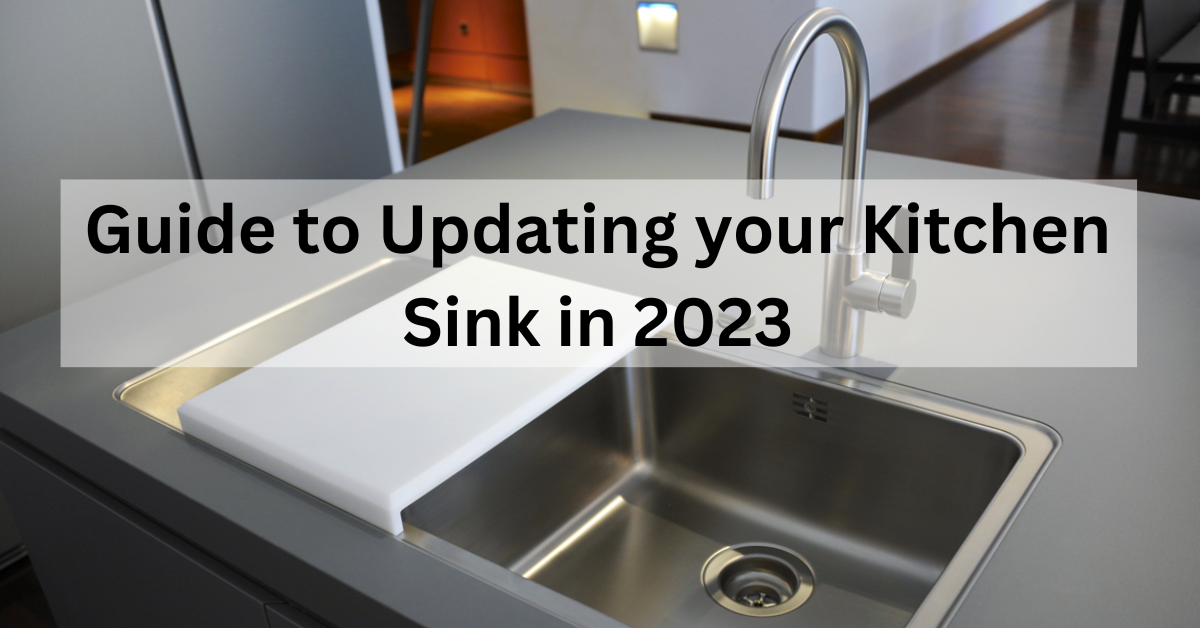Upgrading your kitchen sink faucet can dramatically improve both the functionality and aesthetics of your kitchen. A new faucet can offer enhanced water flow, improved energy efficiency, and a modern look that complements your kitchen’s design. But with so many styles, finishes, and features available, choosing the right one can feel overwhelming. This comprehensive guide will walk you through the process of selecting and installing a new kitchen sink faucet, ensuring a smooth and successful upgrade.
Understanding Kitchen Faucet Types and Styles
The first step is to familiarize yourself with the various types of kitchen faucets available. Each type offers distinct advantages and suits different needs and kitchen layouts.
- Pull-Down Faucets: Feature a spray head that pulls down into the sink, providing extended reach for cleaning.
- Pull-Out Faucets: Similar to pull-down faucets, but the spray head pulls out horizontally.
- Single-Handle Faucets: Offer easy temperature and flow control with a single lever.
- Double-Handle Faucets: Feature separate handles for hot and cold water, allowing for precise temperature mixing.
- Bridge Faucets: A classic style with a horizontal bar connecting the hot and cold water handles.
- Wall-Mounted Faucets: Mounted directly to the wall above the sink, saving countertop space.
Choosing the Right Finish and Material
Consider the overall style of your kitchen and choose a finish that complements your existing appliances and hardware. Common faucet finishes include:
- Chrome: Durable, easy to clean, and a classic choice.
- Brushed Nickel: Offers a warm, muted look and resists fingerprints.
- Oil-Rubbed Bronze: Adds a touch of rustic elegance.
- Matte Black: A modern and sophisticated option.
- Stainless Steel: Durable and resistant to corrosion.
Key Features to Consider When Buying
Beyond style, several key features can significantly impact your faucet’s performance and usability.
| Feature | Description | Benefits |
|---|---|---|
| Spout Height | The distance from the base of the faucet to the spout outlet. | Determines clearance for filling large pots and pans. |
| Flow Rate | Measured in gallons per minute (GPM). | Impacts water consumption and rinsing speed. Look for WaterSense certified models. |
| Sprayer Options | Different spray patterns, such as stream, spray, and pause; | Provide versatility for various cleaning tasks. |
| Ceramic Disc Valves | Durable and leak-resistant valve system. | Ensures smooth operation and long-lasting performance. |
Installing Your New Kitchen Faucet: A Step-by-Step Guide
While professional installation is always an option, many homeowners can successfully install a new kitchen faucet themselves. Here’s a simplified guide:
- Turn off the water supply: Locate the shut-off valves under the sink and turn them off.
- Disconnect the old faucet: Disconnect the water supply lines and carefully remove the old faucet.
- Clean the sink area: Remove any debris or old plumber’s putty.
- Install the new faucet: Follow the manufacturer’s instructions for installing the new faucet, including connecting the water supply lines.
- Test for leaks: Turn the water supply back on and check for any leaks around the faucet base and connections.
Faucet Care and Maintenance Tips
Proper care and maintenance will extend the life of your new faucet and keep it looking its best. Clean your faucet regularly with a mild soap and water solution. Avoid using abrasive cleaners, which can damage the finish. Check for leaks periodically and address them promptly. Consider replacing the aerator every few years to maintain optimal water flow.
FAQ: Frequently Asked Questions About Kitchen Faucets
Q: How do I choose the right size faucet for my sink?
A: Consider the number of holes in your sink and the desired reach of the spout. Measure the distance from the faucet holes to the center of the sink bowl to ensure the spout will reach comfortably.
Q: What is a WaterSense faucet?
A: WaterSense faucets meet EPA criteria for water efficiency, using at least 20% less water than standard faucets without sacrificing performance.
Q: How do I remove mineral deposits from my faucet?
A: Soak a cloth in white vinegar and wrap it around the faucet spout. Let it sit for a few hours or overnight to dissolve the mineral deposits. Rinse thoroughly with water.
Q: What tools do I need to install a kitchen faucet?
A: You’ll generally need an adjustable wrench, basin wrench, pliers, screwdriver, plumber’s tape, and a bucket.
Investing in a new kitchen sink faucet is a worthwhile upgrade that can enhance your kitchen’s functionality and style. By carefully considering your needs, style preferences, and budget, you can find the perfect faucet to complement your kitchen. Remember to research different types and finishes, pay attention to key features like spout height and flow rate, and follow proper installation and maintenance procedures. With a little planning and effort, you can enjoy the benefits of a new and improved kitchen sink faucet for years to come. A well-chosen faucet adds value to your home and makes daily tasks in the kitchen more enjoyable. Take your time, explore your options, and select a faucet that truly reflects your personal style and meets your functional requirements.

